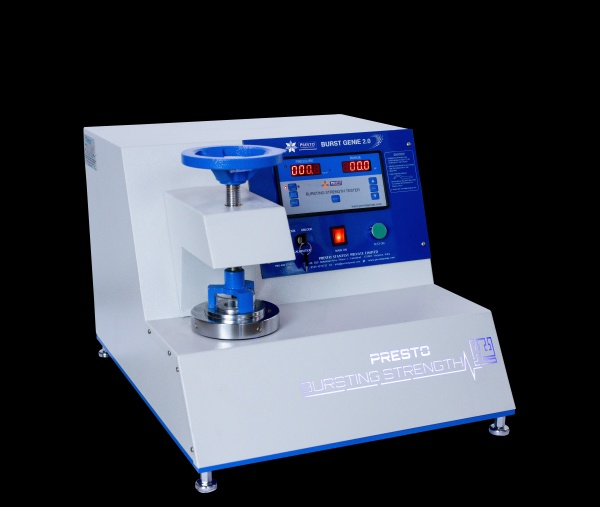Bursting strength testing plays a pivotal role in ensuring the quality and durability of various materials, from corrugated boards to fabrics. This essential procedure involves measuring the force required to rupture a sample, providing valuable insights into its ability to withstand external pressures and rough handling during transport. Let's delve deeper into the mechanics and significance of bursting strength testing.
What is a Bursting Strength Tester?
A bursting strength tester is a specialised apparatus designed to evaluate the resistance of materials to rupture. Typically, it operates by applying hydraulic pressure through a rubber diaphragm onto a small area of the sample under examination. This pressure is steadily increased until the sample ruptures, and the force required for this rupture is accurately measured using a digital indicator. The recorded force is usually quantified in kilograms per square centimetre, with the capacity ranging from 0 to 40 kg/cm².
Why is Bursting Strength Testing Important?
The significance of bursting strength testing cannot be overstated, particularly in the realm of quality control. By subjecting materials to controlled pressure, this test simulates real-world scenarios, such as the rigours of transportation and handling. For instance, in the case of corrugated boards, the bursting strength indicates how well the packaging can withstand both external and internal forces, ensuring the integrity of its contents. Similarly, in fabrics, this test offers valuable insights into their durability and resilience, crucial factors in various applications ranging from apparel to industrial textiles.
How is Bursting Strength Measured?
Bursting strength, also known as the Mullen test or pop test, is quantified in pounds per square inch (psi) and serves as a measure of a material's resistance to rupture. In the case of corrugated boxes, the test involves applying pressure to the sidewalls until they burst, providing a reliable indication of the packaging's strength and protective capabilities.
Additionally, for fabrics, bursting strength can be assessed by pushing a 25 mm diameter steel ball through a stretched sample and recording the force required for penetration. This method offers a convenient and standardised approach, often conducted using a universal strength tester equipped with a suitable attachment.
In Conclusion
Bursting strength testing is an indispensable tool in ensuring the quality and reliability of materials across various industries. By subjecting samples to controlled pressure, this test provides valuable insights into their ability to withstand external forces and maintain integrity during transportation and handling. Whether evaluating corrugated boards or fabrics, understanding bursting strength is essential for maintaining product quality and customer satisfaction.


No comments yet